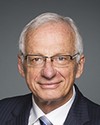Thank you very much, Mr. Chair.
Thank you so much to the three witnesses today for their contributions and their testimonies. It's so important to hear directly from people who are working with the communities, and this is a really difficult time for everybody.
As we've been saying, COVID-19 has really exposed a lot of vulnerabilities, inequities and inequalities in our societies. I know that's front and centre for you guys. I just want to say thank you.
I'm joining you from Milton, which is on the traditional territory of the Haudenosaunee, the Attawandaron, the Anishinabe, the Huron-Wendat and, more recently, the Mississaugas of the Credit First Nation.
My intervention today will focus on mental health. I would like to talk about mental health in the context of the $82.5 million that Minister Marc Miller announced in August, but beyond that as well. I got to do a little bit of sport for development work in my previous life as an athlete ambassador for various charities. I know the impact that sport, physical activity, recreation and that connection to the land and the natural environment—which I think is even more relevant in indigenous communities than southern communities—can have on children but also on those teaching, coaching and mentoring youth and people.
I'm just thinking about long-term and sustainable strategies to mitigate mental health and addiction issues and problems that exist in every community in Canada, which are maybe harder to reach right now because of isolation and the need to be apart.
I want to talk about and hear about any interventions that you find have worked, whether you think the $82.5 million will go far enough for the time being, and how we can really leverage the opportunities—or at least the potential—that sport, recreation and physical activity can have, not just for youth but for everybody in Inuit, first nations and Métis communities across the country.
Just so you guys don't have to choose, I'll go with Ms. Hopkins, Monsieur Cardinal and then Dr. Restoule, in that order.





